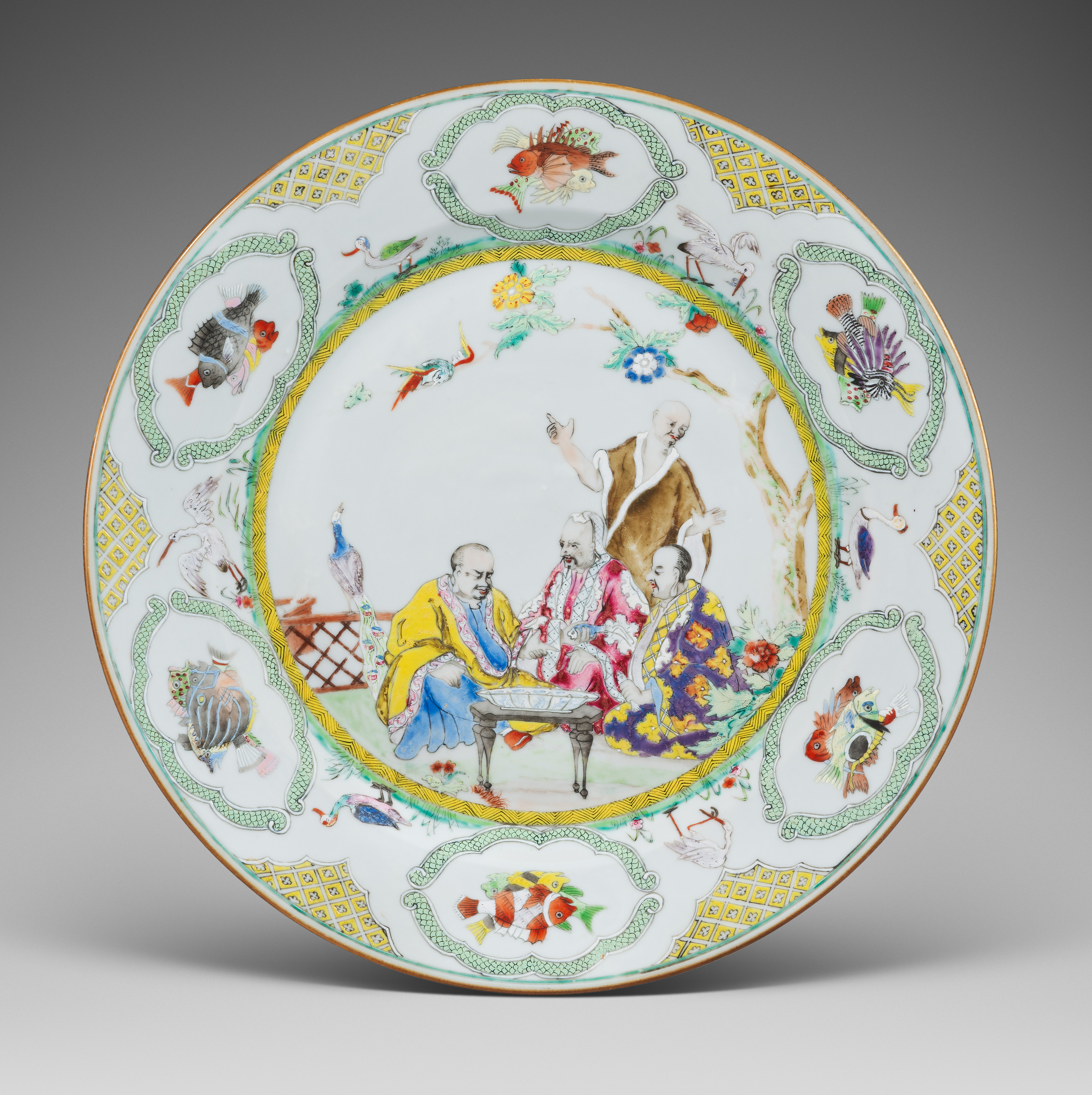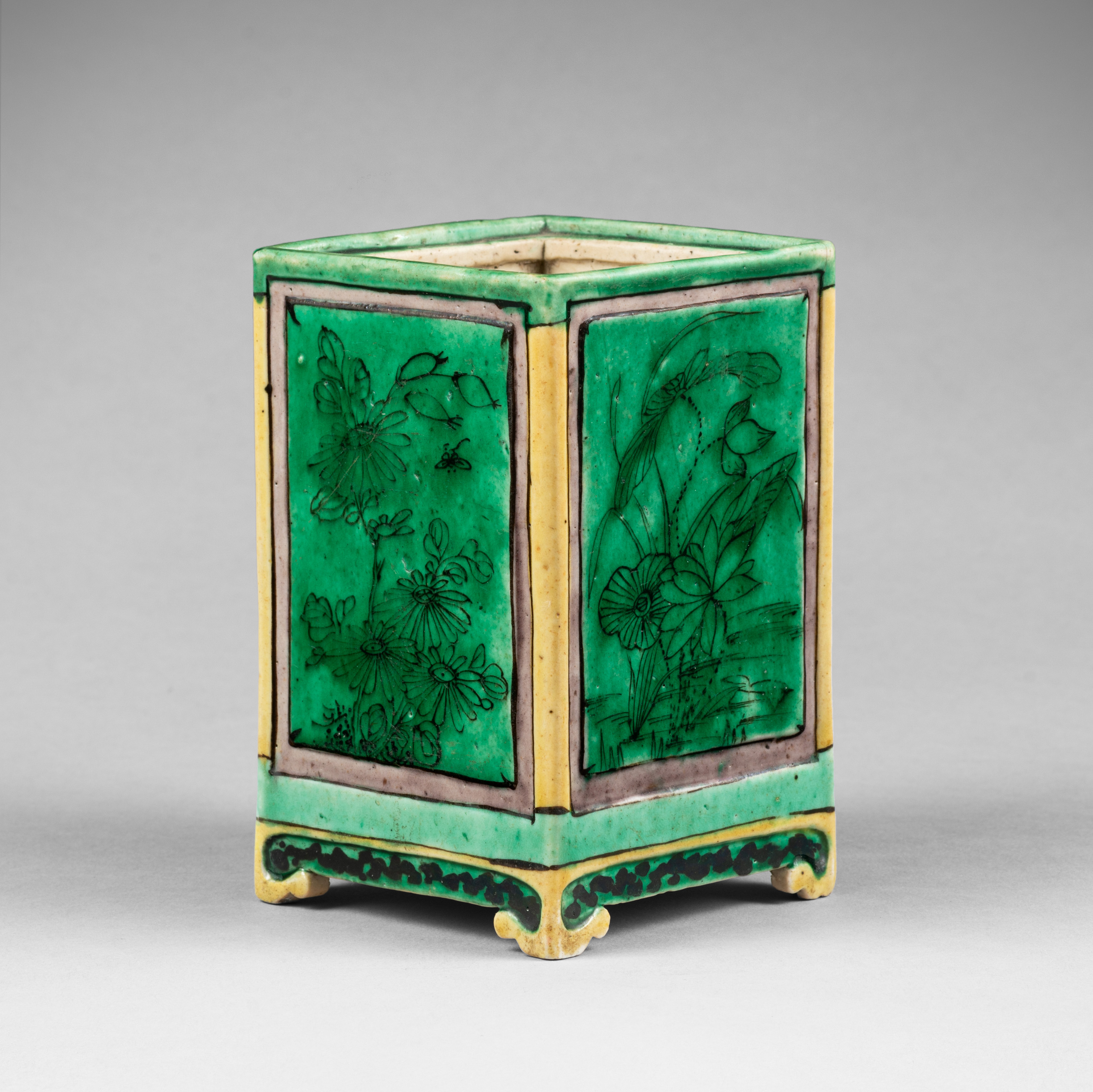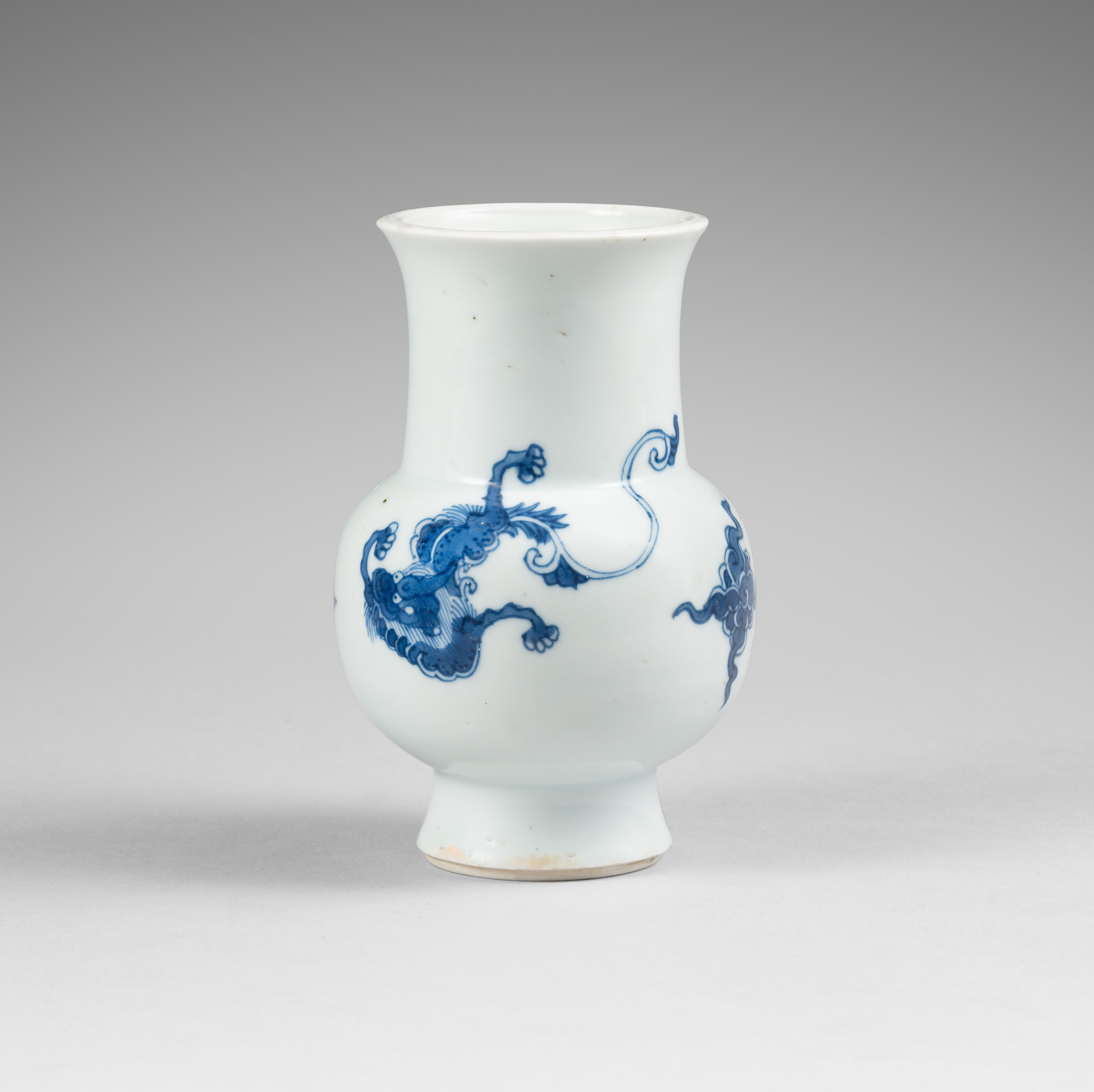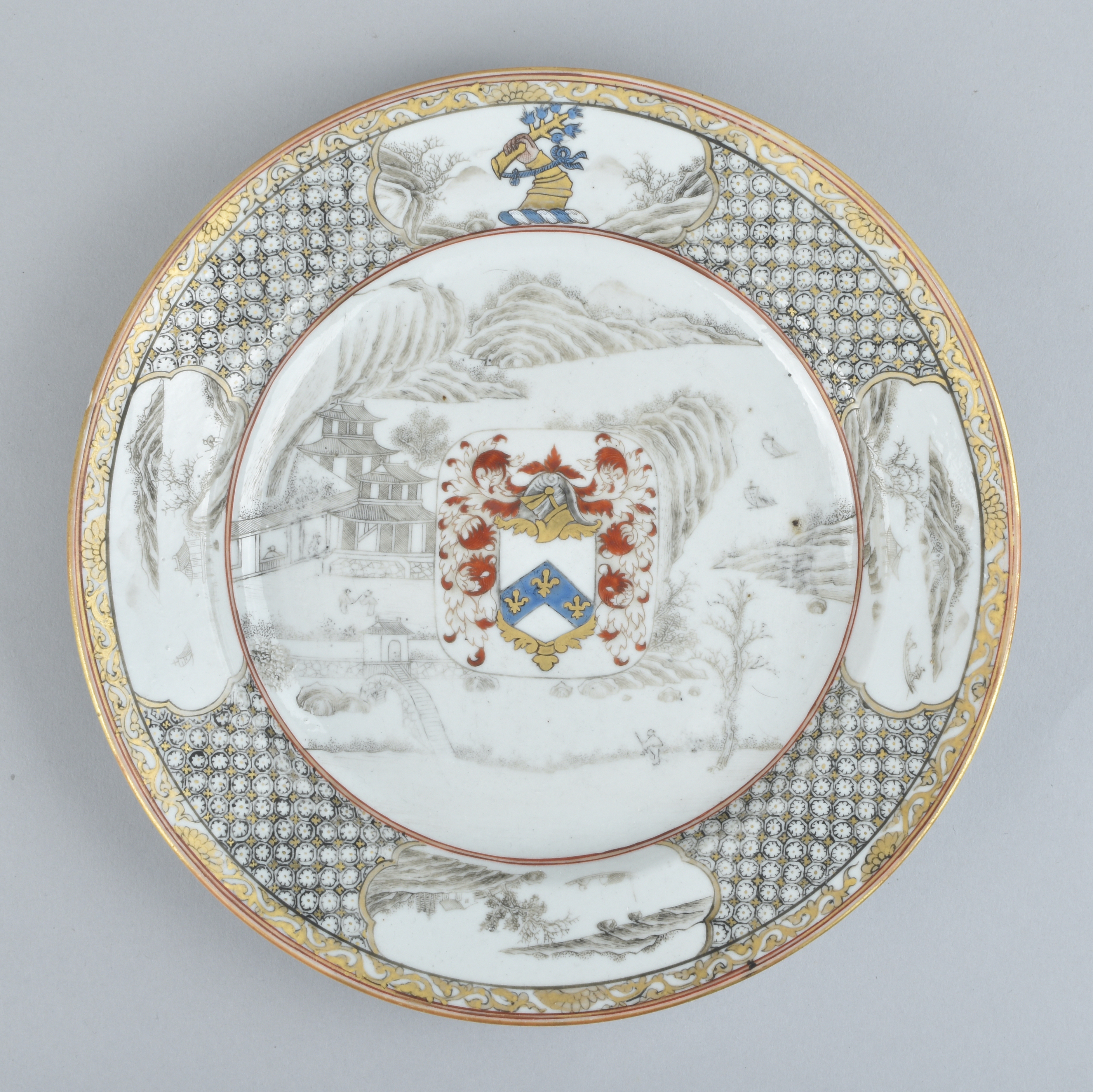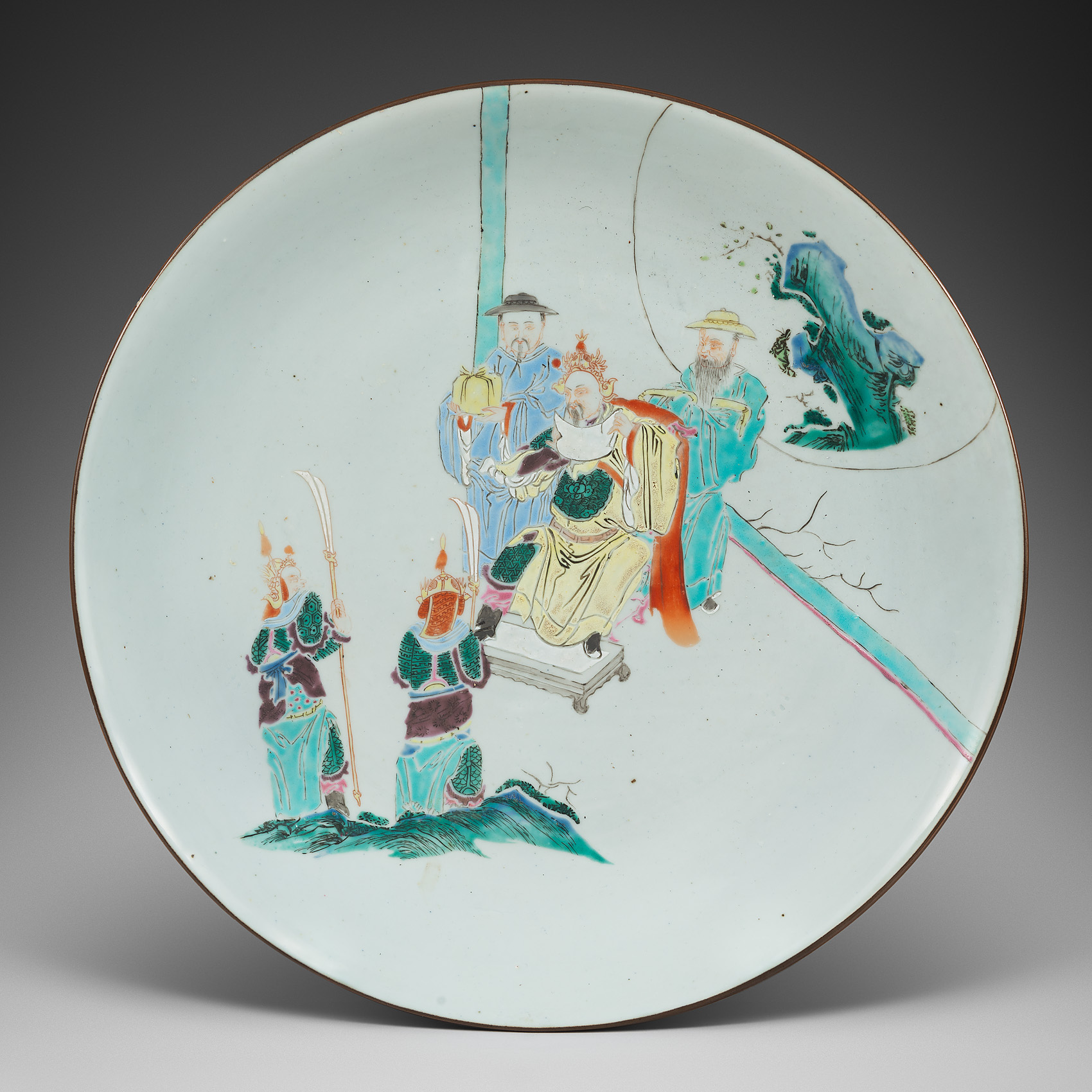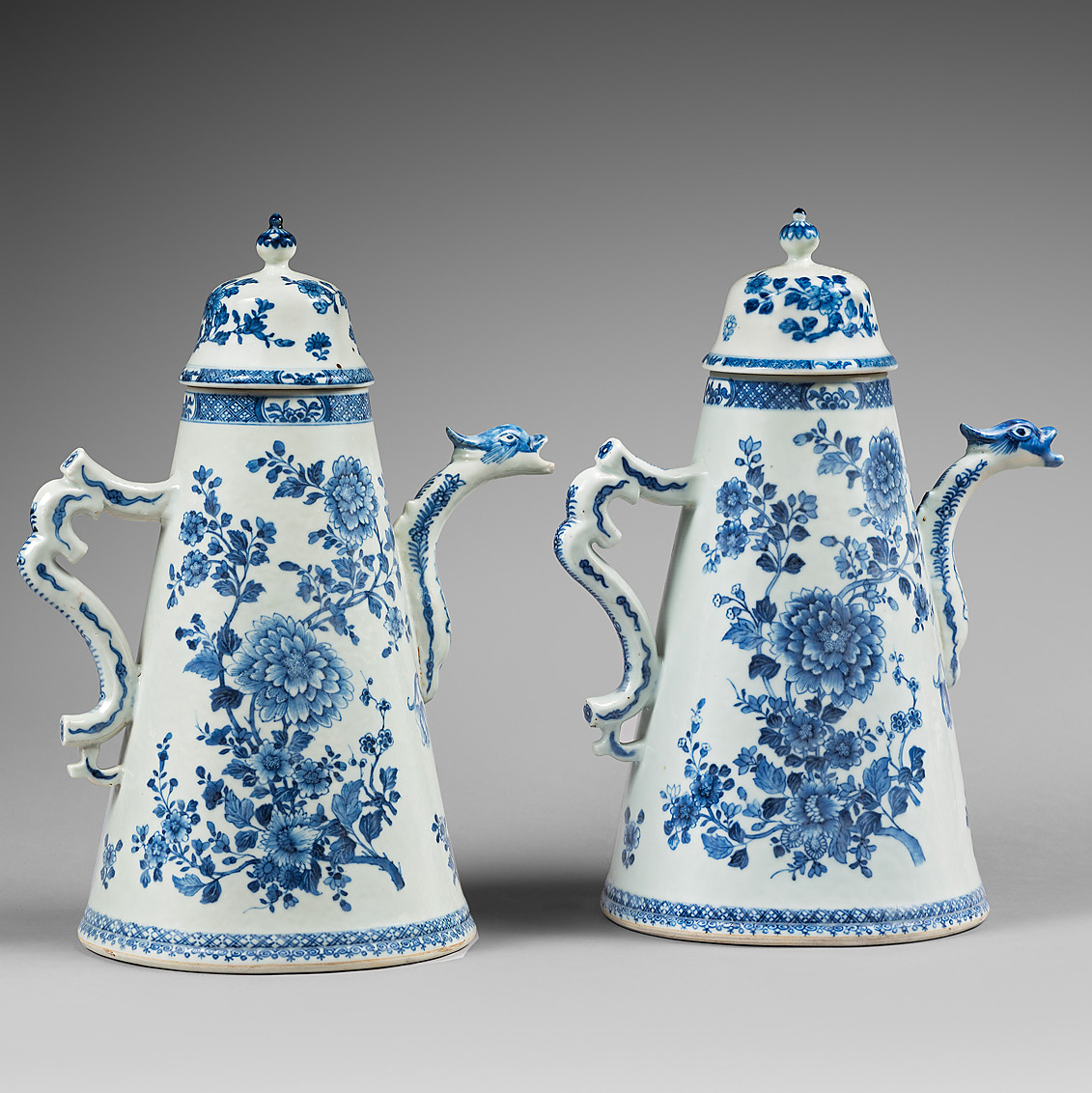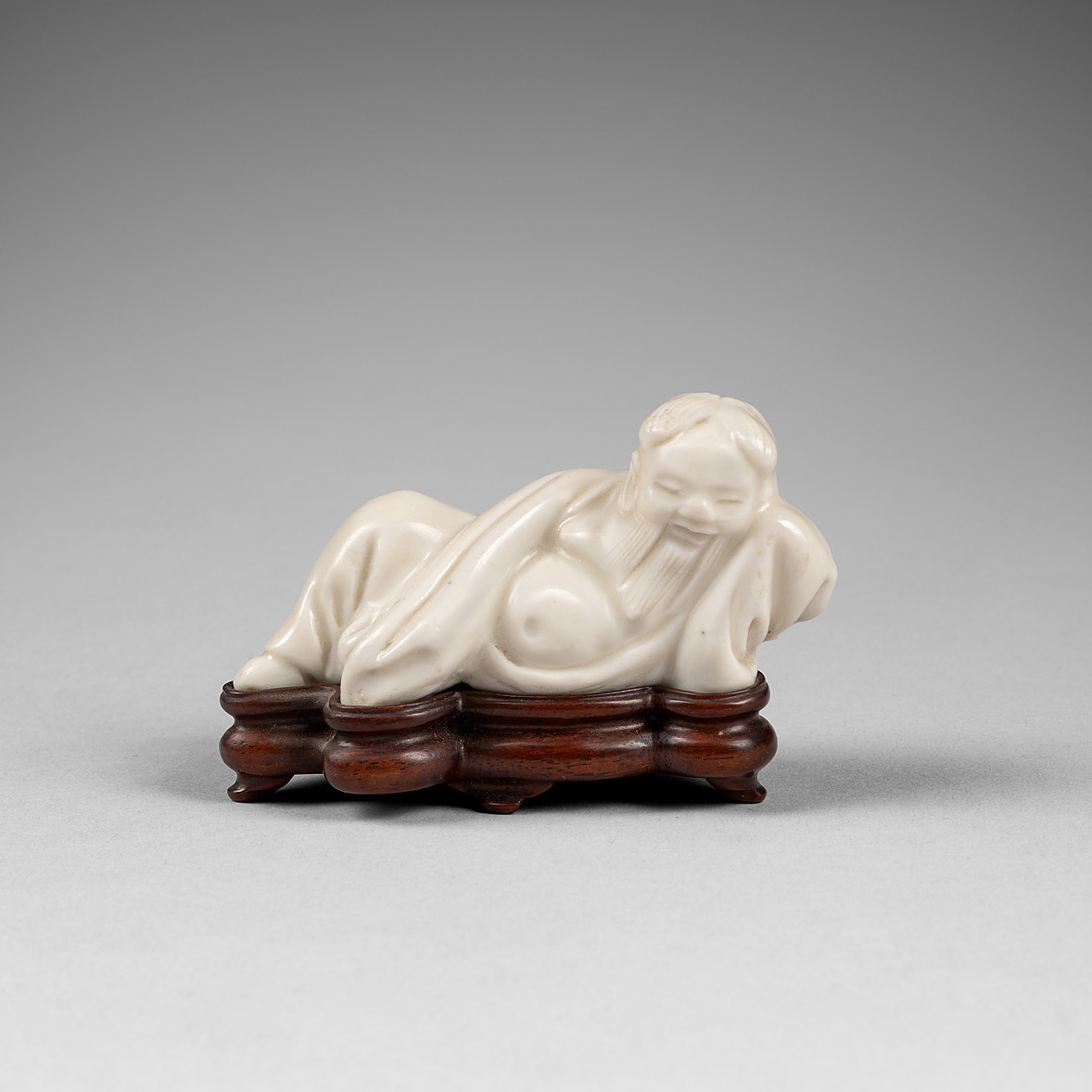
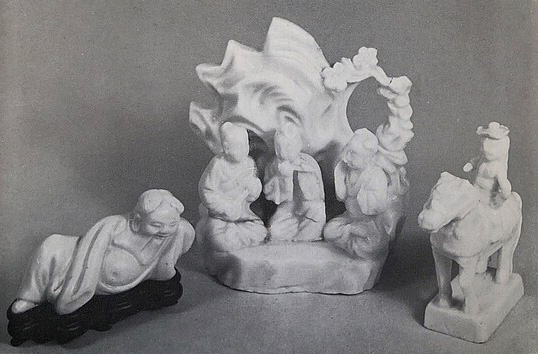
A Chinese blanc-de-chine reclining figure of Zhongli Quan. Late Ming dynasty
The reclining figure depicted is Zhongli Quan, the first of the Daoist Eight Immortals, on a wood stand.
- Country:
- China (Dehua)
- Period :
- Late Ming dynasty (1368-1644), ca. 1630
- Material:
- Porcelain
- Dimension:
- 3.14 in. (8 cm)
- Reference :
- E063
- Status:
- sold
Provenance
From the collection of C.M. Franzero ((1892-1986)
Bluett & Sons Ltd, From the Collection of Dr. C.M. Franzero, London, 1974, no. 64
Related works
An identical figure, from the collection of Frank and Pamela Hickley is in the collections of the Asian Civilisations Museum of Singapour (inventory number 2000-03431-004).
Notice
He typically holds a fan, although here he is depicted without one. He is the master of Lü Dongbin, another of the Eight Immortals. Zhongli Quan, also known as Han Zhongli or Jidao, is a Chinese mythological character and one of the Eight Immortals. Zhongli Quan was believed to have been born in Yanjing during the Han Dynasty. He was destined for greatness from the day he was born by showing features such as a broad forehead, thick ears, long eyebrows, deep eyes, red nose, square mouth, high cheeks, and scarlet lips.
Stories depict that either seven days or seven years later, he began to speak, and the first sentence he uttered was, “my feet have wan- dered in the purple palace of the [immortals], my name is recorded in the capital of the jade emperor.”He followed in his father’s footsteps and became a member of the imperial court, becoming a general in the Han army. He fought and was defeated by the Tibetans, therefore having him to flee into the mountains, where he came across an old man in a spiritual sanctuary. From there he learned the ways of alchemy and immortality. With his knowledge of alchemy, wielding a magic fan, he began turning stones into silver and gold coins and in doing saved people from famine and poverty. There are two stories that depict how he became one of the immortals. In the first, it was in his continuous use of the immortal powers and his magical fan that eventually caused his descent into the shimme- ring cloud of the immortals. In the second, he was meditating near a wall of his hermitage when all of a sudden it collapsed. Behind the wall was a jade vessel that took him as an immortal to the shimmering cloud.
He is usually depicted as a fat man with a bare belly, sometimes holding a peach in his hand. His symbol is the fan, with which he is believed to revive the souls of the dead. In Dehua pottery, the figure of Zhongli Quan is usually portrayed as a merry drinker, and is often mistaken for the poet Li Bai, who also liked to drink.
Dr Carlo Maria Franzero born in Torino in 1892 and died in London in 1986. He was an Italian who studied until 1915 in his hometown, and settled in London and built up an international reputation as a journalist and author. At the beginning of World War II , he fled from Mussolini and Italy , and in England he found his second home. There he worked from 1941 to 1946 as a journalist for the Daily Telegraph . After the war he remained in London , where in 1950 he undertook the task of a foreign correspondent for Time . In addition , he wrote books on historical and literary topics (a biography of Oscar Wilde and an essay on exile of the poet Ugo Foscolo) . The novel he wrote about Cleopatra VII was the main inspiration for the screenplay of 1963 by Joseph L. Mankiewicz staged in the film that he saw Elizabeth Taylor starred in the title role : Cleopatra. Franzero, also known under the alias of Charles Marie Franzero , was a member of the PEN Club and the Order of Merit of the Italian Republic.
Dr Franzero’s first contact with Chinese porcelain was during his visit to China as a budding writer in the far away years of 1921 – 22. However, it was not until 1932 that he was in a position to start buying Chinese porcelain at first modestly in the Caledonian Market. But his serious collecting dates from the war years when his articles in the Daily Telegraph, afterwards published in book form, brought him some affluence. He came to know the dealers and recalls with pleasure the hours he spent with Edgar and Leonard Bluett, ‘that charming man’ Peter Sparks, ‘old Hancock’ and H. R. N. Norton, who, Dr Franzero tells us, used to say his initials stood for ‘His Royal Nothingness’. He says they all seemed to enjoy treating him like a pupil and from them he learnt how to distinguish real quality. It was at this time he acquired his taste for wares enamelled in three colours on biscuit and Fukien blanc-de-Chine. Dr Franzero emphasizes that his self-imposed rule in collecting has been to be guided solely by taste and to accept a degree of damage if a piece is of sufficient quality and beauty.”




















